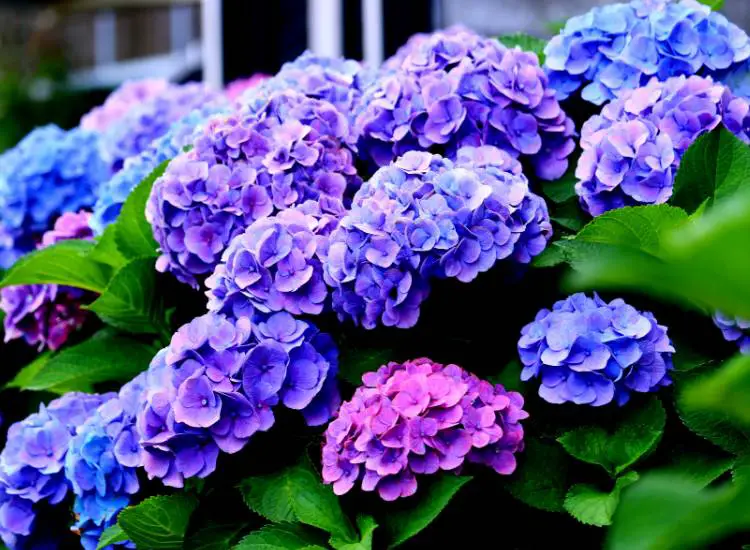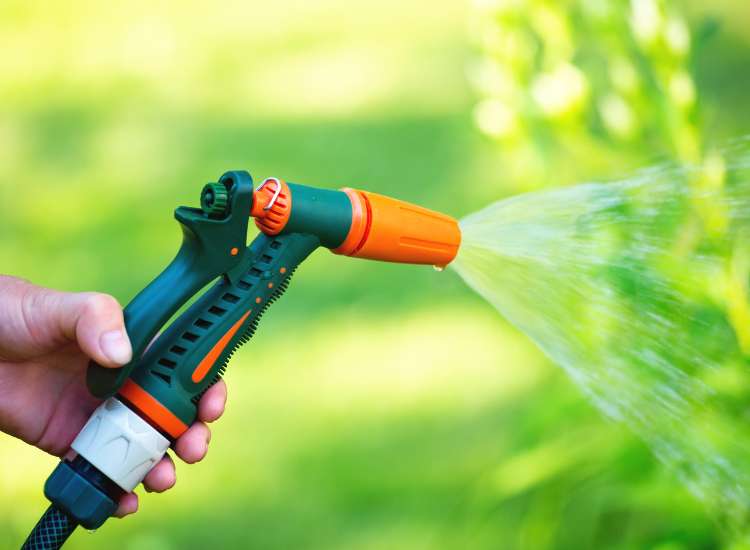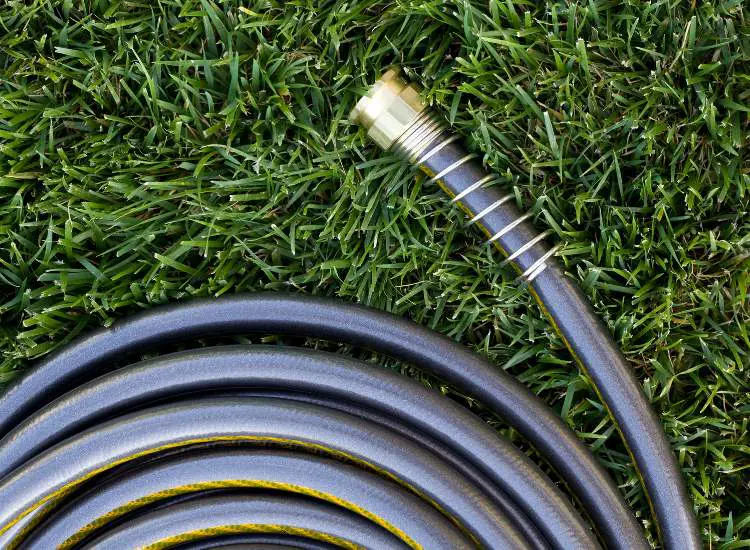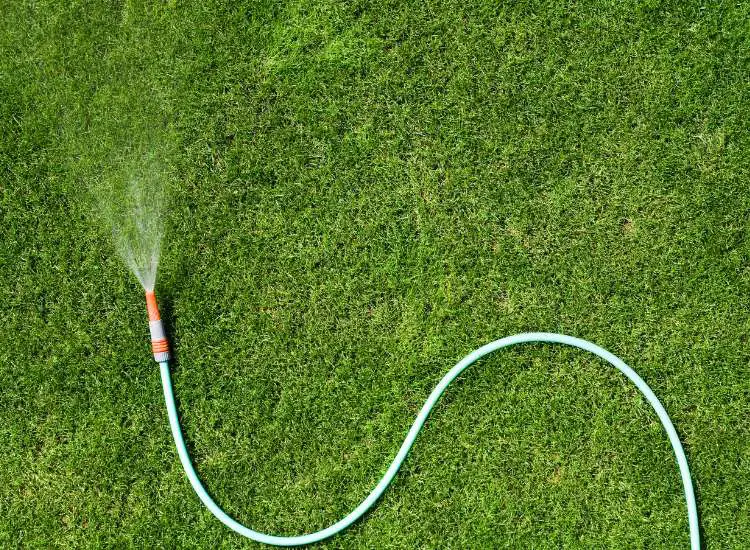Best Mulch for Hydrangeas
Hydrangeas are known for their lush blooms and stunning colors. But in order for your plant to thrive, it’s essential to use the very best mulch for hydrangeas.
Selecting the right mulch provides numerous benefits, including moisture retention, weed suppression, and temperature regulation. In this article, I’ll explore the best mulch options to consider, helping your plants thrive and produce beautiful blossoms.
Types of Mulch for Hydrangeas

Organic Mulch
Organic mulches are a great choice for your hydrangeas. They offer nutrients as they decompose, promoting healthy plant growth. Some popular options include:
- Pine bark: Pine bark is long-lasting and helps maintain soil acidity, which hydrangeas love.
- Shredded leaves: They provide essential nutrients and encourage earthworm activity. Just be careful not to use walnut leaves, as they can harm hydrangeas.
Inorganic Mulch
Inorganic mulches can also be beneficial, as they won’t decompose and will require less frequent replacement. Some common types are:
- Stone: Stone mulch can create a decorative look but remember that it doesn’t provide any added nutrients.
- Landscape fabric: This helps to control weeds and can be paired with an organic mulch on top for added benefits.
Remember to choose the right mulch according to your specific needs and preferences to ensure your hydrangeas thrive.
Benefits of Mulch for Hydrangeas

Moisture Retention
When you apply mulch around your hydrangeas, it helps retain moisture in the soil. This is especially helpful during dry periods, because it reduces the need for frequent watering and keeps the plant well-hydrated.
Weed Control
Mulching around your hydrangeas also suppresses weed growth. By preventing weed competition your plants can better access water and nutrients in the soil, leading to healthier growth.
Temperature Regulation
Applying mulch to your hydrangea beds helps regulate soil temperature. In the hot summer months, it keeps soil cooler, and in the colder months it insulates the roots. This temperature control promotes optimal plant growth.
Soil Nutrient Enhancement
As the mulch breaks down over time it adds valuable nutrients to the soil. This nutrient enhancement is beneficial for your hydrangeas, promoting healthier growth and more vibrant blooms.
Factors to Consider When Choosing Mulch for Hydrangeas

Soil pH Requirements
Hydrangeas grow well in slightly acidic soil with a pH between 5.5 and 6.5. When selecting mulch, consider its impact on soil pH. Pine needles and sphagnum peat moss are acidic, making them suitable choices. Keep in mind, organic materials like shredded leaves decompose over time, making soil more neutral.
Climate
In colder regions you need mulch that insulates roots from frost. Opt for wood chips or shredded bark as they are great insulators. Conversely, in warmer climates, mulch should help retain moisture and keep soil temperatures cooler. Grass clippings and straw are suitable choices here.
Aesthetics
Mulch also serves an aesthetic purpose in your garden. Choose a type that complements your yard’s appearance. Organic mulch variants, such as shredded cedar bark or colored wood chips, can enhance a garden’s visual appeal. However, remember that appearance shouldn’t compromise your hydrangeas’ health and growth.
How to Apply Mulch to Hydrangeas

Preparing the Soil
Before applying mulch, clear away any debris around your hydrangeas like leaves or weeds. Then gently loosen the top layer of soil with a cultivator or hand rake. This helps the water and nutrients from the mulch reach the plant roots.
Mulch Thickness
When you’re ready to mulch, spread a hearty layer around the base of your hydrangea—about 2 to 4 inches thick. Make sure to leave a gap between the mulch and the plant stems, so air and water can circulate freely.
Mulch Maintenance
- Keep an eye on the mulch level and add more as needed throughout the year.
- Occasionally, stir the mulch to prevent mold and ensure even decomposition.
- Lastly, replace the mulch at least every 2 to 3 years for optimal benefits to your hydrangeas.
Frequently Asked Questions

What type of mulch is ideal for hydrangeas?
The best mulch for hydrangeas is one that helps retain moisture, moderates soil temperature, and suppresses weeds. Try using shredded bark, wood chips, or pine straw.
How does mulch affect hydrangea colors?
Mulch can impact the soil pH levels, which influence hydrangea colors. Acidic soil (lower pH) produces blue flowers, while alkaline soil (higher pH) results in pink flowers. Choose a mulch that suits your desired hydrangea color.
When is the right time to mulch around hydrangeas?
The optimal time for mulching hydrangeas is early spring, before new growth emerges. This will help conserve moisture, suppress weeds, and regulate soil temperature for the upcoming growing season.
Are organic mulches suitable for hydrangeas?
Yes, organic mulches provide essential nutrients to the soil as they decompose. They also help retain moisture, regulate soil temperature, and suppress weeds. Organic options include shredded bark, wood chips, and pine straw.
Which mulch is better for hydrangeas – acidic or alkaline?
Decide based on your desired hydrangea color. Acidic mulch, such as pine needles, produces blue flowers, while alkaline mulch, like hardwood bark, results in pink flowers.






